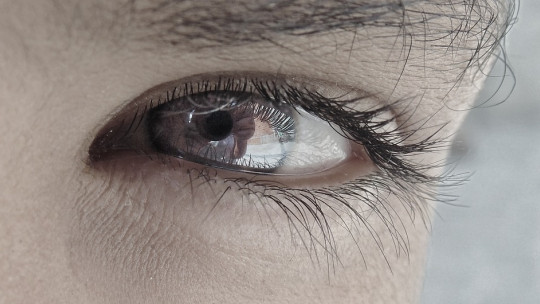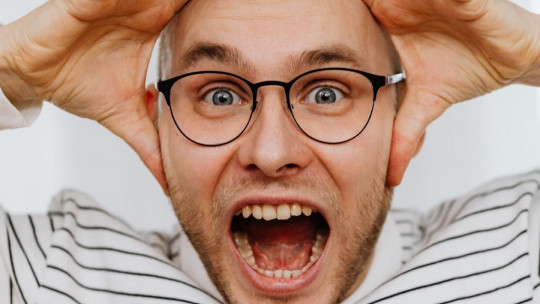Cognitive biases are psychological effects that lead to an erroneous interpretation of reality. We explain what the most common biases are.

The cognitive biases, also called cognitive prejudices, are erroneous thoughts that cause a distorted perception of reality, which results in illogical expression or thinking. Its meaning does not mean that we have a problem or that our brain does not create logical thoughts or expressions, but rather that it causes us to give too much importance to some aspects and avoid others. Hence arises the great influence that cognitive biases have on the perception of reality.
What is a cognitive bias? Meaning
The cognitive biases arise as an evolutionary effect to achieve a response immediately filtering the available information subjectively. This immediacy leads us to make decisions more efficiently but also generates thoughts that in many cases are erroneous. The processes from which biases arise include the processing of information through so-called “shortcuts” (heuristic), moral and emotional motivations and the influence of society, among others. The cognitive psychology studies this effect as well as the rest of the ways in which we process information and how they relate to each other.
The psychologists Daniel Kahneman (who received a Nobel Prize in Economics in 2002 for having integrated psychological research and economics in decision making under uncertainty) and Amos Tversky were the first to point out in 1973 the Incidence of cognitive biases when making prognoses and judgments under uncertainty And that in these circumstances people do not seem to follow the calculations for chance or statistical theory, human decisions differed from what was predictable according to rational choice theory. Many researchers later explained these differences in heuristic terms, processes that are intuitive but introduce systematic errors.
Normally when we want to make a decision, we try to evaluate all the options we have, but on many occasions we do not realize that we give more value to one of those points and we do not decide rationally but end up doing so subjectively. This is how we end up making decisions that seem illogical, but we do it. Because? That is the value of cognitive bias
Influence of biases on the perception of reality
Thus, cognitive biases lead us to illogical and irrational beliefs and, therefore, to a grasp of reality that is not always real. However, these should not be confused with social prejudices, in which one is conscious of making a prior judgment without sufficient arguments to support it. In the case of biases, these are:
- Unconscious
- Involuntary
- Rapid
- They condition us unconsciously
An example of this is assuming that a price of €99 is much better than €100 when the difference in practice is absolutely irrelevant.

Types of cognitive biases
There are some cognitive biases that are more present in our daily lives. It is very possible that you can identify yourself through these cognitive biases and their examples
- The group illusion: The group illusion also known as the gambler’s fallacy It consists of thinking that individual random situations are determined by previous situations.
- Inattentional blindness: This cognitive bias or prejudice It is a consequence of an error in attention and consists of not taking into account what happens when we are focused on a certain thing and we do not see anything that is happening around us.
- Selective observation bias: It is about thinking or reflecting on something based on what we consider important. In this way, the cognitive biases of observation They can harm our self-esteem and self-perception.
- Self-justification bias: This cognitive bias consists of constantly justifying something you have done to avoid feeling regrets or think about the mistake you have made.
- Hindsight bias: It is another of the most common cognitive biases Through this cognitive prejudice, we begin to reflect on past events, giving contributions or explanations of what should have been done to avoid it, as if that had been possible.
- Self-fulfilling prophecy: We think about something that is not true but we act that way because we believe it is what we have to do and, when that is confirmed, we take it as a completely real fact. Exactly like a prophecy. He self-fulfilling prophecy bias It consists of causing something that we fear will happen but that oneself ends up generating with one’s attitude and actions.
- Series illusion or apophenia: This cognitive bias It is very similar to the group illusion, except that with apophenia we see patterns where there are none. We perceive connections in random events and data that make no sense and give them a certain meaning. In 1959 the neurologist Klaus Conrad defined it as “concrete experiences of abnormally giving meaning to what does not have it.”

- Framing effect: It is a fairly common bias. It is about establishing conclusions based on how the information is presented. The same data can lead you to think one thing or another depending on how it is transmitted to you. In politics and the media they play with this bias to influence public opinion.
- Attribution bias: It is what makes us think that only we have fought and achieved something, that only we have done it well, that only we are understandable and empathetic.
- Confirmation bias: It is a type of cognitive bias very common. It consists of considering as valid those facts or data that correspond to or support our opinion about something specific, denying those others that are not. They are a consequence of selective thinking, of a subjective interpretation of what happens. We only read what confirms our own opinions.
- Halo effect: He halo effect It is a tendency to make our impressions and opinions about certain characteristics of a subject or object depend on the first impression that other characteristics have made on us before.
- Fear of loss: This cognitive bias It consists of trying to avoid a change for fear of losing out. This option is what we have talked about previously about the comfort zone, we close the door to possible improvements in our quality of life out of fear.
- Exposure gap bias: These types of bias are nothing more than the repetition of behaviors solely because they are familiar to us.
- Memory bias: He memory bias It can alter the content of what we have remembered. These cognitive biases cause us to remember facts that are wrong or to give ourselves experiences that have happened to others.
- Authority bias: This cognitive bias It implies that people have a tendency to overestimate the opinion of a person who is considered the authority on a given topic.

- Anchoring bias or anchoring heuristic: He anchor bias also known as anchoring heuristic, is that people usually use the first information they give us to play all the other decisions that are related to that context.
- Observer bias: This bias It consists of the fact that we act differently and make different attributions to a situation depending on whether we are the actors or if we are the observers.
- Attention bias: He attention bias It consists of the tendency that some people have to give more importance or pay more attention to some stimuli compared to others.
- Beauty effect: It is a psychological effect that produces a deviation in our way of perceiving the beauty of semas. In this way when the beauty effect people think that a man or a woman is more attractive when they are in a group than when they are alone.
- Acquiescence bias: This bias occurs in surveys. According to research, people are usually more inclined to give a positive option before negative ones.
Cognitive biases: Examples
To understand how cognitive biases influence us, here we show you a series of examples about each of them.
- Group illusion: To think that this year the Christmas Jackpot is going to end in three because that number has not been published for many years. This type of cognitive bias or cognitive errors usually affect and lead to errors in games of chance.
- Inattentional blindness: For example, when we have a bad day, people tend to focus more on the negative than the positive. In this way, we give more priority to the details that are bad for us.
- Selective observation: Perhaps the clearest example is that of pregnant women or couples on Valentine’s Day. When we are pregnant or trying to get pregnant, we only see women with bellies, just like on Valentine’s Day, when – especially if we don’t have a partner and we want to have one – we go out on the street and only see lovey-dovey couples.
- Self-justification bias: An example of this may be spending an exorbitant amount of money on a new, cutting-edge mobile phone. This self-justification bias will mean that instead of feeling guilty and thinking that we have done something crazy and could have bought a cheaper model, we will justify that we need it at all costs.
- Hindsight bias: When we think after having a bad experience that you could have avoided it because now you know what happened.
- Self-fulfilling prophecy: We think “I’m sure I’ll fall off my bike.” We kind of prophesy that it’s going to happen, so when it happens, we think, “I knew it.”
- Serial illusion: Thinking that seeing the same number several times for a very short time is a sign that you are going to win the lottery if you play with it.
- Framing effect: A person tells you that another is very unfriendly. When you meet her you think that you dislike her without knowing why.
- Attribution bias: An example of attribution bias is when we compare our effort to study exams with that of another person who has passed them and who we believe deserves it less than us.
- Confirmation bias: You tend to read the same news blogs because they all reaffirm your ideological positions.
- Halo effect: If we find someone physically attractive we tend to assume that they have more positive characteristics and we will be more open to discovering them.
- Fear of loss: For example, you want to buy an apartment and now you are renting. You evaluate the pros and cons of each option and it seems that the purchase wins but you do not change for fear of getting tired of the apartment and then not being able to sell it, that it becomes too small and you cannot continue enjoying it…
- Exposure gap bias: An example of this would be to educate our children in the same way that they did with themselves just because they did it with you. Surely in the past you questioned things about the education you were given, but once you put yourself in the role, you reproduce it by imitation.
- Memory bias: When a person tries to remember their mobile phone and instead of remembering the most recent one, all their old numbers come to mind.
- Authority bias: You think your boss is more right to start a debate with another person in the company.
li style="text-align:
The information published by MundoPsicologos does not replace in any case the relationship between the patient and his psychologist. MundoPsicologos does not endorse any specific treatment, commercial product or service.








